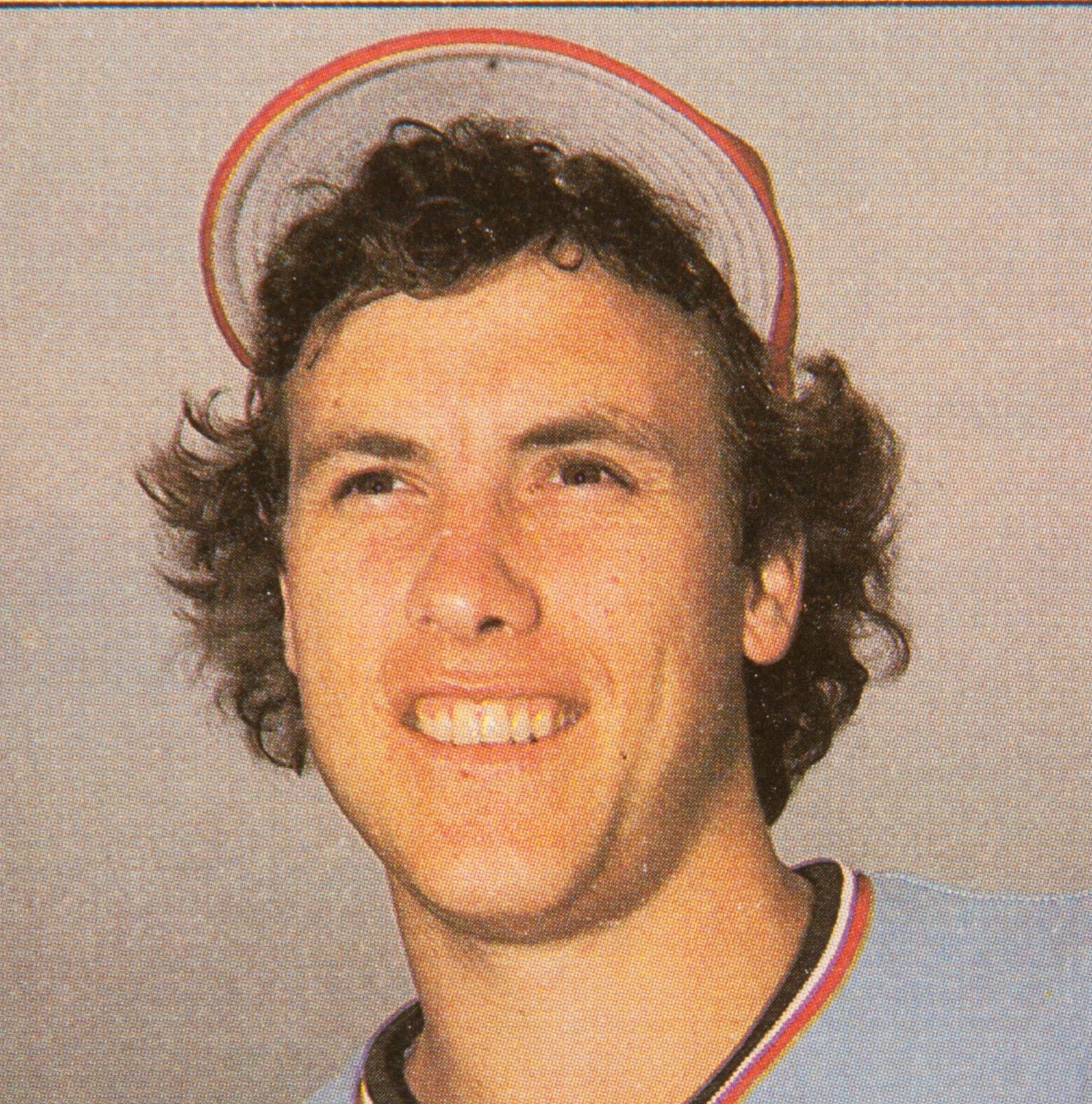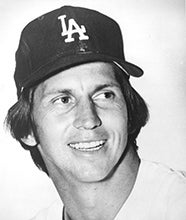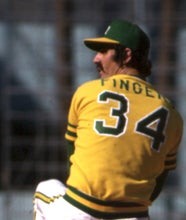- Home
- Our Stories
- #CardCorner: 1987 Topps Kevin Bass
#CardCorner: 1987 Topps Kevin Bass
He was the centerpiece of a deal that brought Hall of Famer Don Sutton to Milwaukee – a trade that arguably won the pennant for the 1982 Brewers.
Unlike Sutton, Kevin Bass never earned a spot in Cooperstown. But for the better part of a decade, Bass was one of the best right fielders in the game.
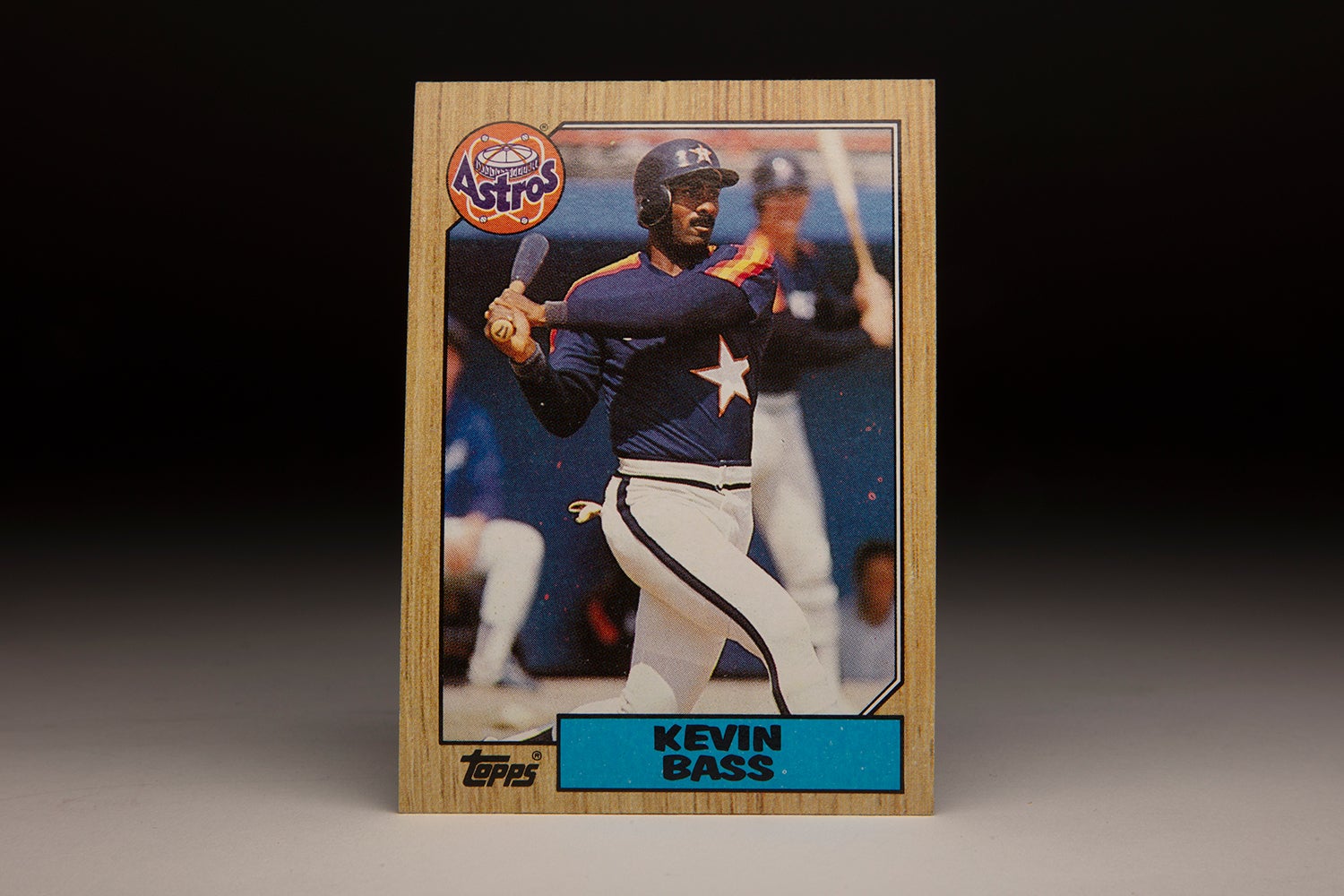
Born May 12, 1959, in Redwood City, Calif., halfway between San Francisco and San Jose, Bass attended Menlo School during his prep years and starred in both baseball and football, earning All-South Peninsula Athletic League Back of the Year honors as a senior in 1976. On the diamond the following spring, Bass hit .434 and committed to the University of Southern California but changed his mind when the Brewers made him their second-round selection in the June MLB Draft.
The Brewers sent Bass to Newark of the New York-Penn League in the summer of 1977, and Bass hit .296 with 11 stolen bases in 48 games. In his first full professional season in 1978, Bass batted .265 with 18 homers, 69 RBI and 36 steals in 129 games for Class A Burlington of the Midwest League. The Bees lost to Appleton 2-games-to-1 in the Midwest League championship series as Bass – batting third for Burlington and playing center field – had a hit and two RBI in the final game, which Burlington lost 11-10.
Bass was promoted to Double-A Holyoke in 1979 and he hit .263 with eight home runs and 54 RBI in 135 games, securing a spot on the Brewers’ 40-man roster following the season. He returned to Holyoke in 1980 and hit .300 with 35 steals, earning a place on the Eastern League All-Star team.
Now a right fielder, Bass played in the Mexican Winter League following the 1980 campaign and led the loop in hits while batting .319. His ascension through the Brewers’ system convinced general manager Harry Dalton that Bass was a future big leaguer.
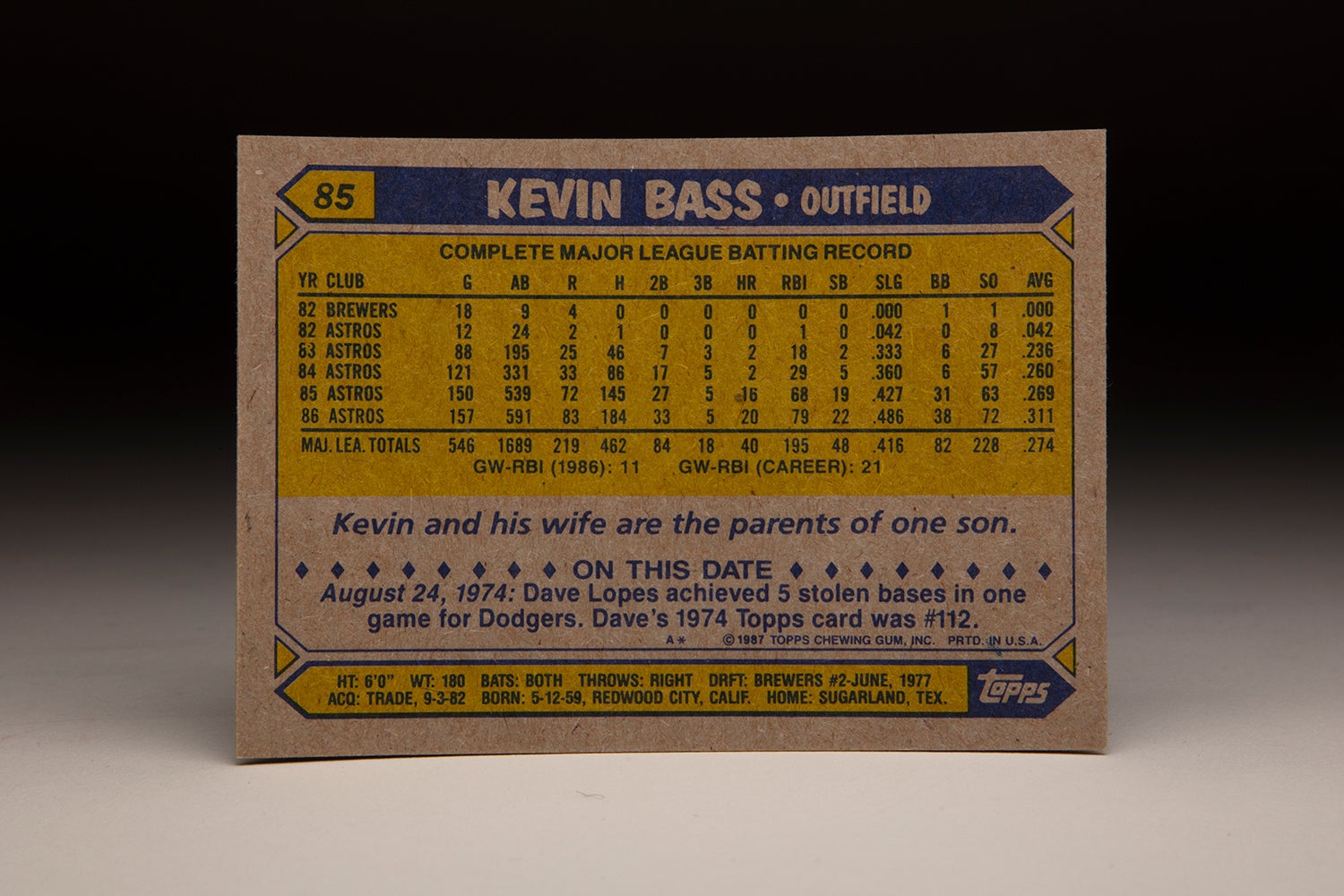
“Bass is one of the reasons we made the Fingers deal,” Dalton told the Wisconsin State Journal in the spring of 1981, referring to Dec. 12, 1980, trade that brought future Hall of Famers Rollie Fingers and Ted Simmons to the Brewers – along with Pete Vuckovich – in exchange for Dave LaPoint, Sixto Lezcano, Lary Sorensen and top outfield prospect David Green. “We figured we could give up David Green with Bass around.”
Bass was among the Brewers’ final cuts in Spring Training of 1981 and was sent to Triple-A Vancouver, where he hit .257 with 29 steals in 97 games, missing time at the end of the season with an injured shoulder.
In 1982, Bass made the big league club’s Opening Day roster as a reserve outfielder.
“It’s a shock,” Bass told the Wisconsin State Journal of his promotion to the majors. “From day one when I signed in ’77, I looked forward to this. It’s a thrill. Frankly, I thought I was going to be gone in the first cut they made. Then I started realizing that I had a chance to make the club.”
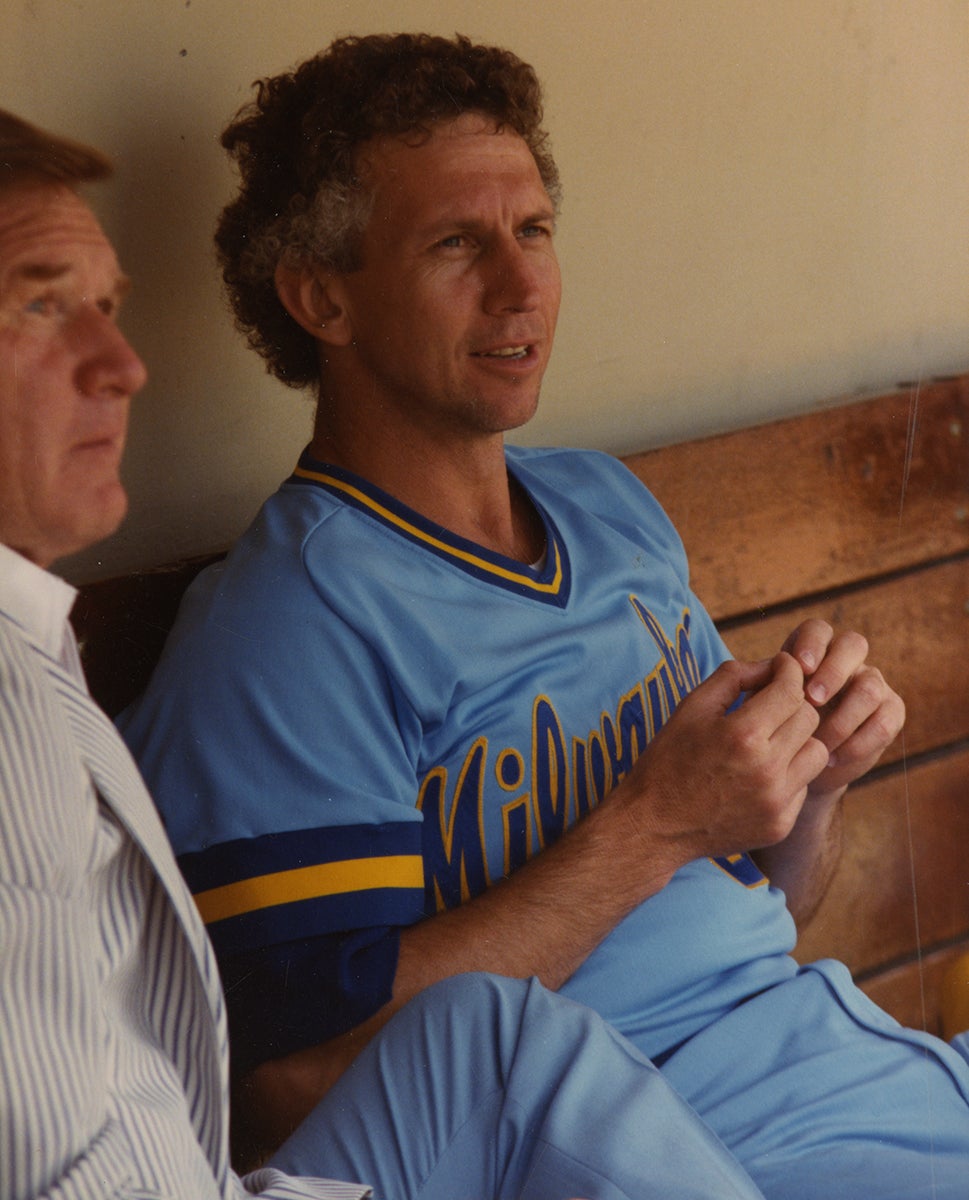
Bass made his Brewers debut as a pinch-hitter on Opening Day against the Blue Jays and got his first start – in right field – against Cleveland on April 15. But he was hitless in 11 plate appearances through May 13, leading the Brewers to send him back to Vancouver.
Bass blossomed in his second stint in Vancouver, hitting a team-best .315 with 17 homers, 65 RBI and 23 steals in 102 games. Then on Aug. 30 – with the Brewers locked in a battle with the Orioles for the American League East title – Milwaukee acquired Sutton from the Astros for three players to be named later. After those players cleared waivers, they were revealed to be pitchers Mike Madden and Frank DiPino along with Bass.
“You grow up in this organization so it’s the only one I know,” Bass told the Wisconsin State Journal while waiting for the trade to become official. “But it’s nice to know that some of the other 25 teams think enough of your talent that they might want to look at me.”
Bass immediately reported to Houston and appeared in 12 games at the tail end of the season, recording his first big league hit. Then in 1983, Bass made the Astros’ Opening Day roster and served as the team’s fourth outfielder for most the season, hitting .236 in 88 games off the bench.
Bass started 64 games in 1984 – mostly in right field – but struggled to find his power stroke, hitting just two home runs in 121 games. But he batted .260, giving the Astros hope that the bet they placed on Bass in September of 1982 was about to pay off.
In 1985, Bass again began the season on the bench but moved into the starting lineup when right fielder Terry Puhl went on the disabled list on April 22. After getting comfortable in his new role, Bass got hot as the season progressed and finished the year batting .269 with 16 homers, 27 doubles, 68 RBI and 19 steals in 150 games.
“I’ve got to contribute every time I’m in (the lineup),” Bass told United Press International when he took over as a starter. “Puhl is an asset, but as far as I’m concerned it’s my job right now.”

The Astros entered the 1986 season with a new manager, Hal Lanier, and relatively low expectations. But thanks to a legendary season from pitcher Mike Scott, Houston shocked the prognosticators by winning the NL West. Bass led the team in hits (184), doubles (33), triples (5) and total bases (287) while hitting .311 with 20 homers, 79 RBI and 22 steals. Hitting out of the No. 5 spot in the batting order most of the year while protecting cleanup hitter Glenn Davis, the switch-hitting Bass played only 23 games all year where he did not record a hit or a walk. He was named to his first All-Star Game and eventually finished seventh in the NL Most Valuable Player voting.
Appearing in his first – and what would turn out to be his only – postseason series, Bass hit .292 in the NLCS vs. the Mets. He drew widespread praise from the national media for his all-around play but would end the series on a sour note when he struck out swinging against Jesse Orosco with the go-head runner on base in the 16th inning of New York’s 7-6 win in Game 6. Scott, who had been virtually unhittable in the series, was on schedule to pitch Game 7 – but the win in Game 6 wrapped up the pennant for the Mets and ended one of the most exciting LCS matchups in history.
“When I saw the last pitch, I thought (Bass) would get a base hit, and we would be playing all night,” Ray Knight, Bass’ former teammate with the Astros and then the Mets’ third baseman, told the Fort Worth Star-Telegram. “I went numb for a second and it seemed like my brain stopped working. It didn’t register that it was finally over.”
Lanier had nothing but praise for his team, including Bass.
“If it had to happen,” Lanier told the Star-Telegram, “I’m glad it happened the way it did, coming back and going down swinging.”
Bass continued his excellent play in 1987 after undergoing offseason shoulder surgery to remove a bone spur and winning a $630,000 one-year deal via arbitration. He hit .284 with 19 homers, 85 RBI and 21 steals in 157 games. On Sept. 2 against the Cubs, Bass homered from both sides of the plate – becoming the first player in NL history with multiple games with switch-hit home runs in one season after turning the trick for the first time on Aug. 3 against the Giants.
Bass slumped to .255 in 1988 but still managed 14 homers, 72 RBI and 31 steals in 157 games despite being the subject of trade rumors that had him going to the Yankees in exchange for Dave Winfield.
Entering his free agent platform year in 1989, Bass was hitting .290 in late May when he suffered a broken left tibia – after fouling a ball off his shin – that sidelined him for 10 weeks. He finished the year hitting .300 with 44 RBI in 87 games before signing a three-year, $5.25 million contract with the Giants that included the first-ever no-trade clause issued by the Giants.
Bass was thrilled to return home to continue his career.
“Look who I’m hitting in front of,” Bass, who was expected to hit in the No. 2 hole, told the Associated Press about a Giants lineup that would feature Will Clark, Kevin Mitchell and Matt Williams. “Hey, there won’t be any attention on me.”
Al Rosen, the Giants’ general manager who signed Bass, was the Astros’ GM who acquired Bass from the Brewers in 1982.
“Kevin Bass is an outstanding addition to our ballclub,” Rosen told the AP.

But Bass suffered a left knee injury in May, and the subsequent surgery sidelined him until September. He finished the year batting .252 with seven homers and 32 RBI in 61 games. And with the knee still bothering him in 1991, Bass hit .233 with 10 homers and 40 RBI in 124 games.
Bass spent much of the 1992 season in left field with the Giants and hit .268 in 89 games before being traded to the Mets on Aug. 8 for a player to be named later who turned out to be minor leaguer Rob Katzaroff. He hit .270 in 46 games for the Mets before becoming a free agent and returning to Houston via a one-year deal on Jan. 5, 1993.
Welcomed back to the team that had given him his big break in the majors, Bass immediately joined the team’s winter caravan and enjoyed the warm reception. He hit .284 in 111 games off the bench that year, then returned to the Astros on another one-year deal for 1994.
With his knee feeling better than it had in years, Bass was hitting .310 with a .393 on-base percentage through 82 games in 1994 when the strike ended the season. With his contract again expired, he considered retiring but wound up signing a minor-league deal with the Orioles and made the big league roster to start the 1995 season.
“It was a long wait for me over the winter, a lot of questions about what I was going to do,” Bass told the News Journal of Wilmington, Del. “I thought about not playing. That became a real possibility. I just had to wait it out. I kept hoping somebody would want me.”
The Orioles also brought in veteran outfielder Andy Van Slyke that year but eventually turned to Bass, who hit .244 in 111 games, including 69 starting assignments.
Bass did not find a suitable offer for the 1996 season, however, and did not play that year. He returned in 1997 on a minor league contract with the Angels but did not make the Opening Day roster. He played in four games for the Angels’ Triple-A team in Vancouver – the site of his breakout Triple-A campaign in 1982 with the Brewers’ organization – before announcing his retirement.
Bass finished his career with a .270 batting average, 1,308 hits, 118 home runs and 151 steals. He averaged 155 games per season with the Astros from 1985-88 – during which time he was widely regarded as one of the most well-rounded players in the game.
“He’s an excellent right fielder who can contribute both at the plate and in the field,” Al Rosen, one of Bass’ biggest supporters throughout his career, told the AP when he signed Bass to a contract with the Giants. “He plays hard, he plays every day, he gives you everything he’s got.”
Craig Muder is the director of communications for the National Baseball Hall of Fame and Museum


